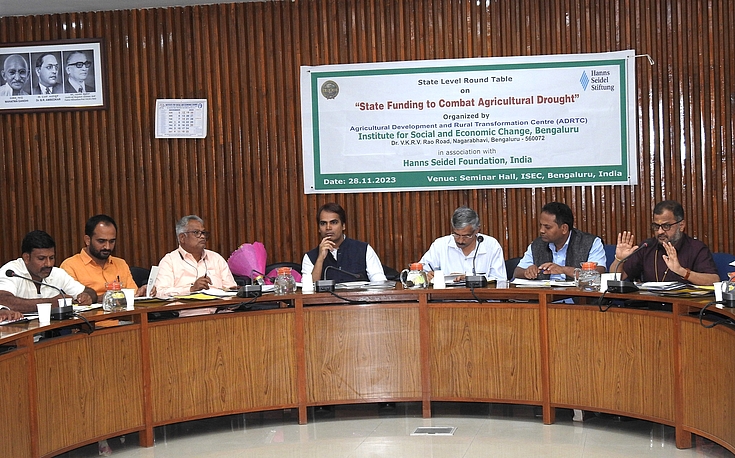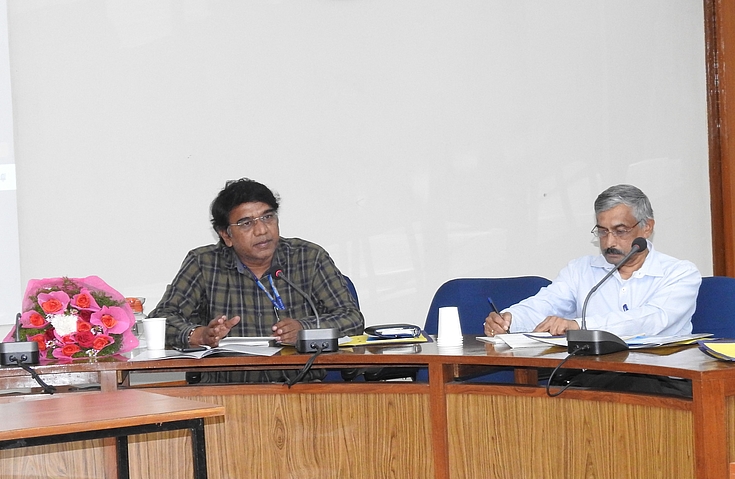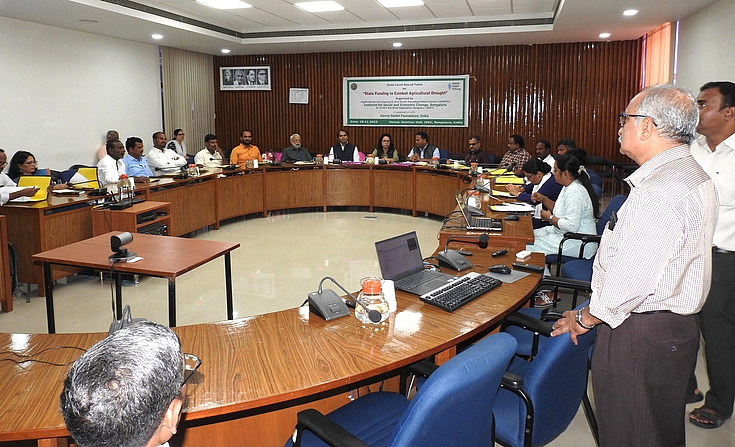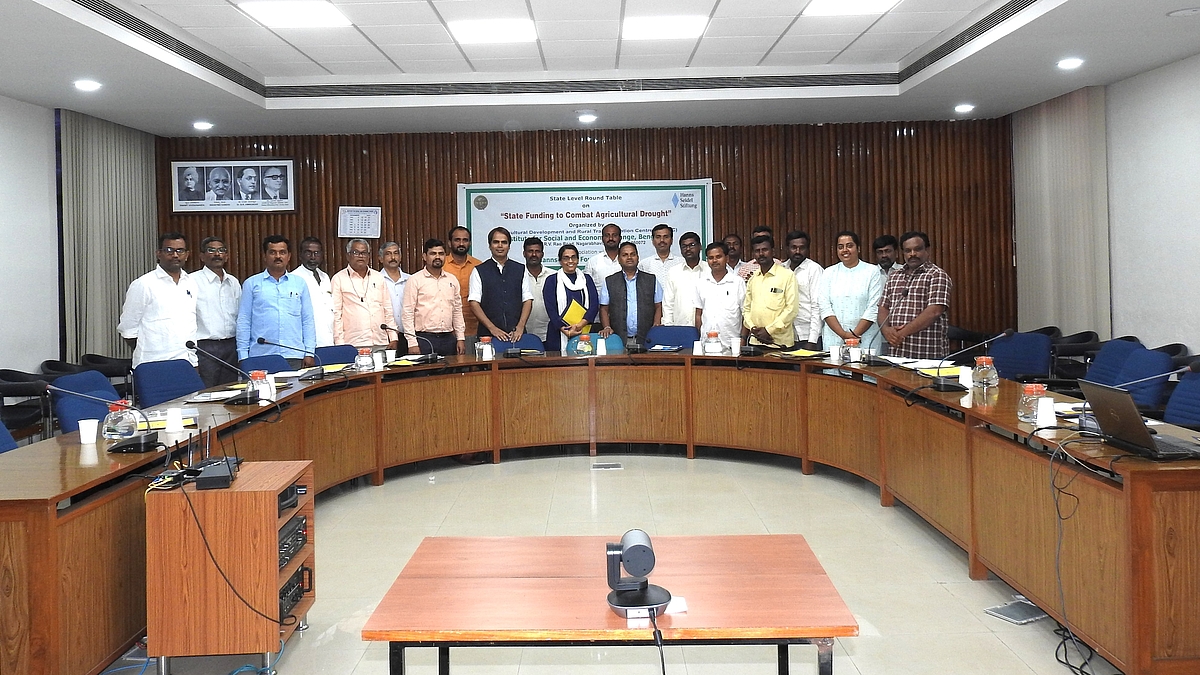On November 28th, the state-level round table, organised by ISEC in collaboration with HSS, acted as a very critical platform for the project. The round table brought the state and district level government officials, NGOs, farmers and people from academia together to discuss the nature and scope of the state funding to fight droughts through water use efficiency and micro-irrigation technologies. The round table focused on the following three key aspects:
- Demand or supply side allocation of funds for agricultural drought
- Efficacy of budget allocation
- Efficiency of fund utilization




